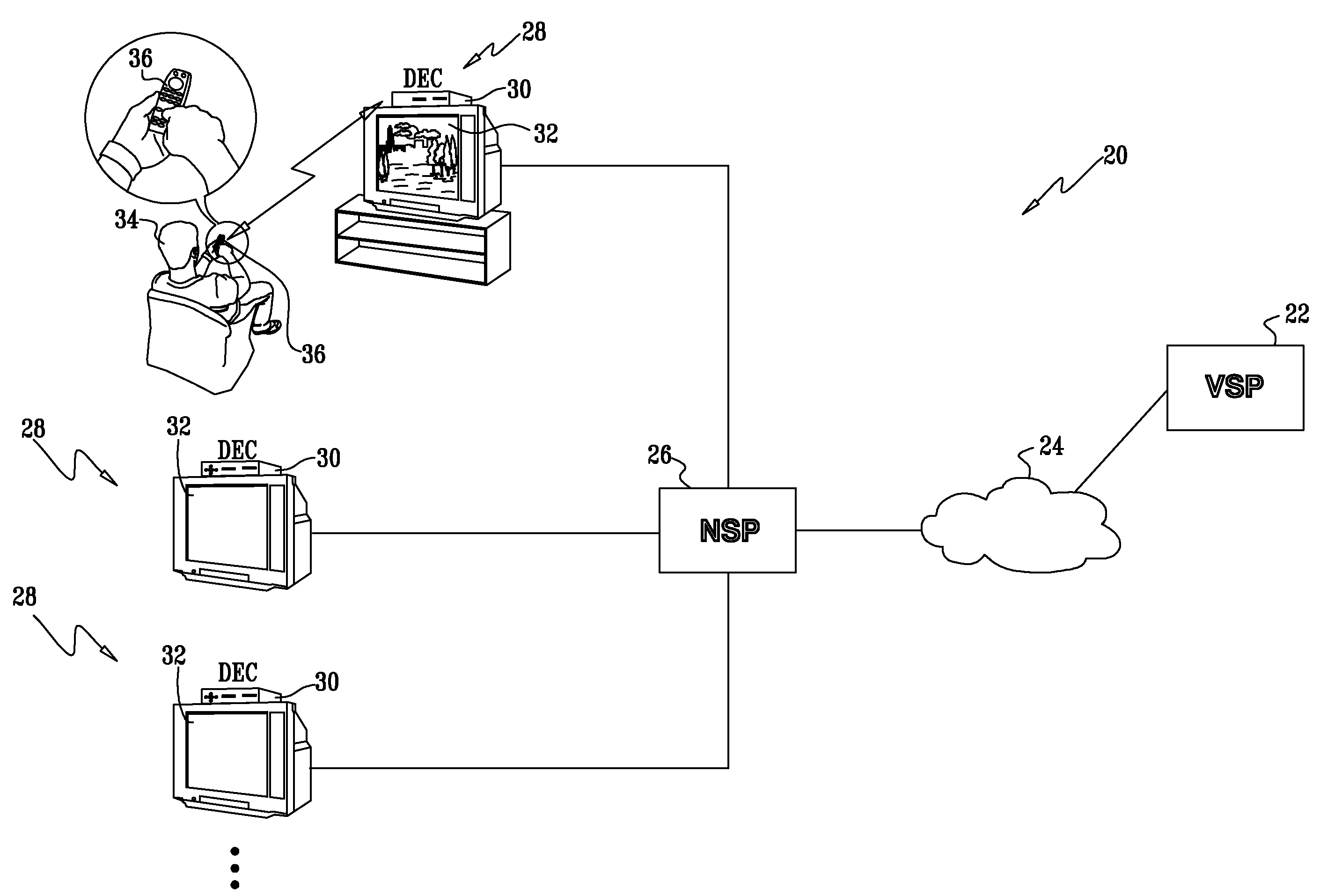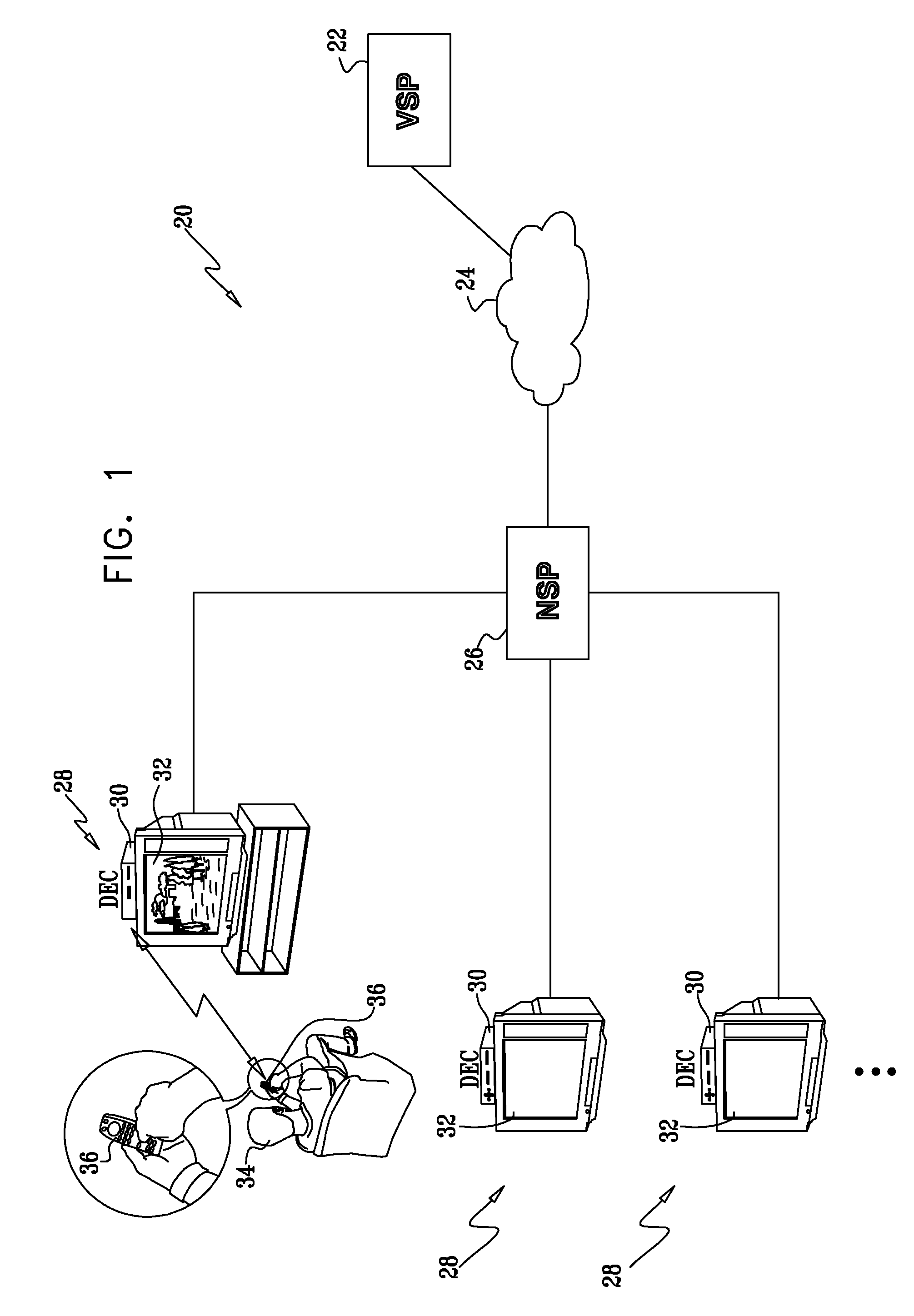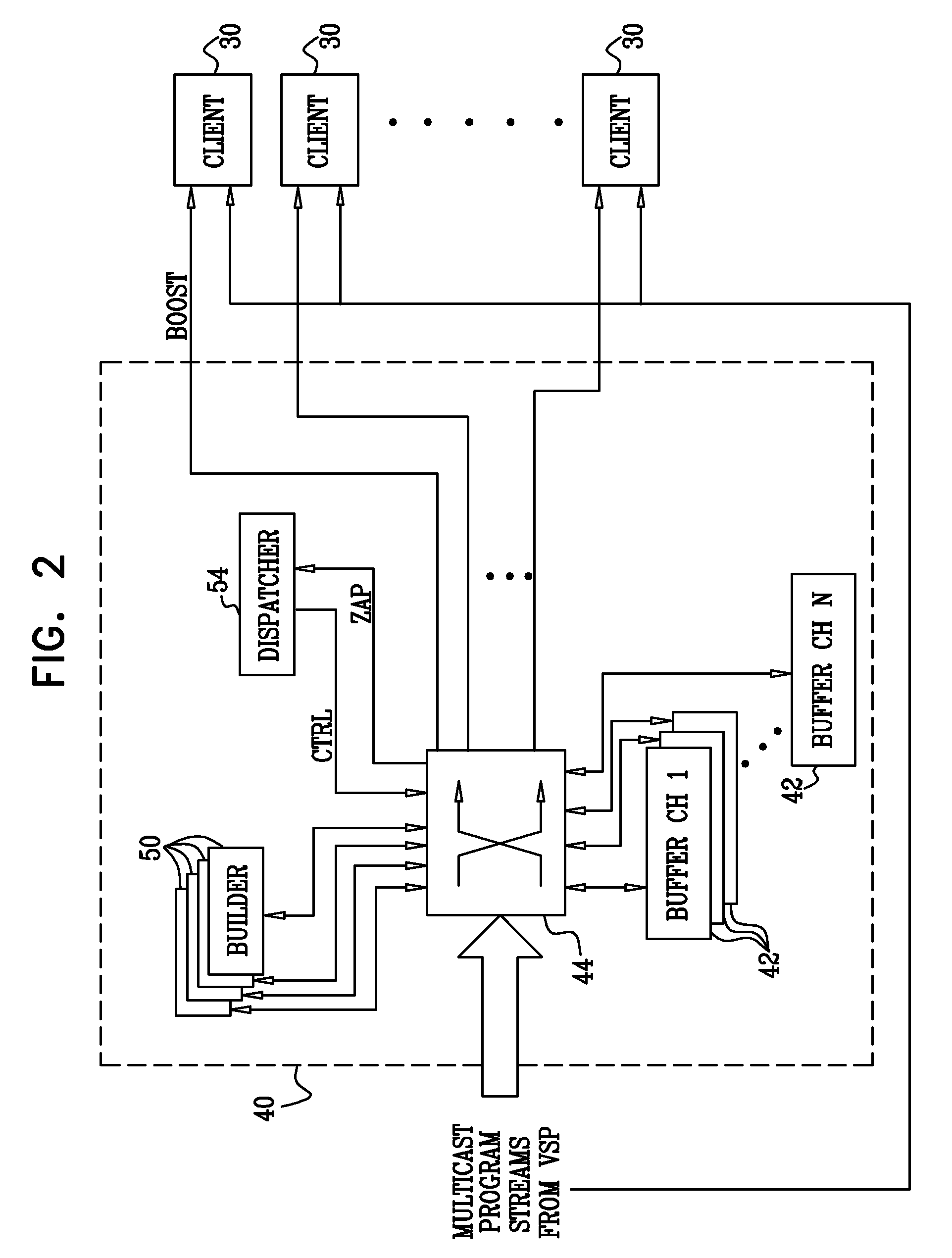Fast channel switching for digital TV
- Summary
- Abstract
- Description
- Claims
- Application Information
AI Technical Summary
Benefits of technology
Problems solved by technology
Method used
Image
Examples
Embodiment Construction
[0017]FIG. 1 is a block diagram that schematically illustrates a system 20 for packetized video multicast, in accordance with an embodiment of the present invention. A video service provider (VSP) 22 transmits a set of multicast video channels through a backbone packet network 24, such as the Internet. A network service provider (NSP) operates an access multiplexer 26, which serves as a multicast transmitter. Multiplexer 26 receives the multicast streams from VSP 22 and distributes the streams to client terminals 28 (which are also referred to herein simply as “clients”). Although only a single VSP is shown in FIG. 1, in practice the NSP may receive and distribute multicast streams from multiple different VSPs and may also serve itself as a VSP. In the pictured embodiment, each terminal 28 comprises a video decoder 30, such as a set-top box, which is connected to a television set 32. Alternatively, the terminals may comprise personal computers or any other type of suitable hardware ...
PUM
 Login to View More
Login to View More Abstract
Description
Claims
Application Information
 Login to View More
Login to View More - R&D
- Intellectual Property
- Life Sciences
- Materials
- Tech Scout
- Unparalleled Data Quality
- Higher Quality Content
- 60% Fewer Hallucinations
Browse by: Latest US Patents, China's latest patents, Technical Efficacy Thesaurus, Application Domain, Technology Topic, Popular Technical Reports.
© 2025 PatSnap. All rights reserved.Legal|Privacy policy|Modern Slavery Act Transparency Statement|Sitemap|About US| Contact US: help@patsnap.com



